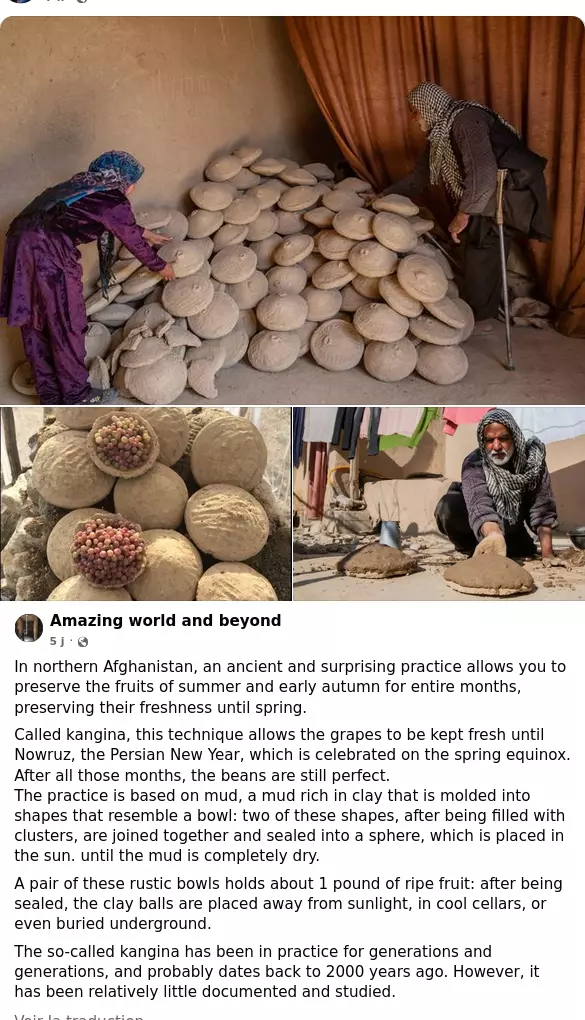
In northern #Afghanistan, an ancient and surprising practice allows you to preserve the fruits of summer and early autumn for entire months, preserving their freshness until spring.
Called #kangina, this technique allows the #grapes to be kept fresh until Nowruz, the Persian New Year, which is celebrated on the spring equinox. After all those months, the beans are still perfect.
The practice is based on #mud, a mud rich in #clay that is molded into shapes that resemble a bowl: two of these shapes, after being filled with clusters, are joined together and sealed into a sphere, which is placed in the sun. until the mud is completely dry.
A pair of these rustic bowls holds about 1 pound of ripe fruit: after being sealed, the clay balls are placed away from sunlight, in cool cellars, or even buried underground.
The so-called kangina has been in practice for generations and generations, and probably dates back to 2000 years ago. However, it has been relatively little documented and studied.
